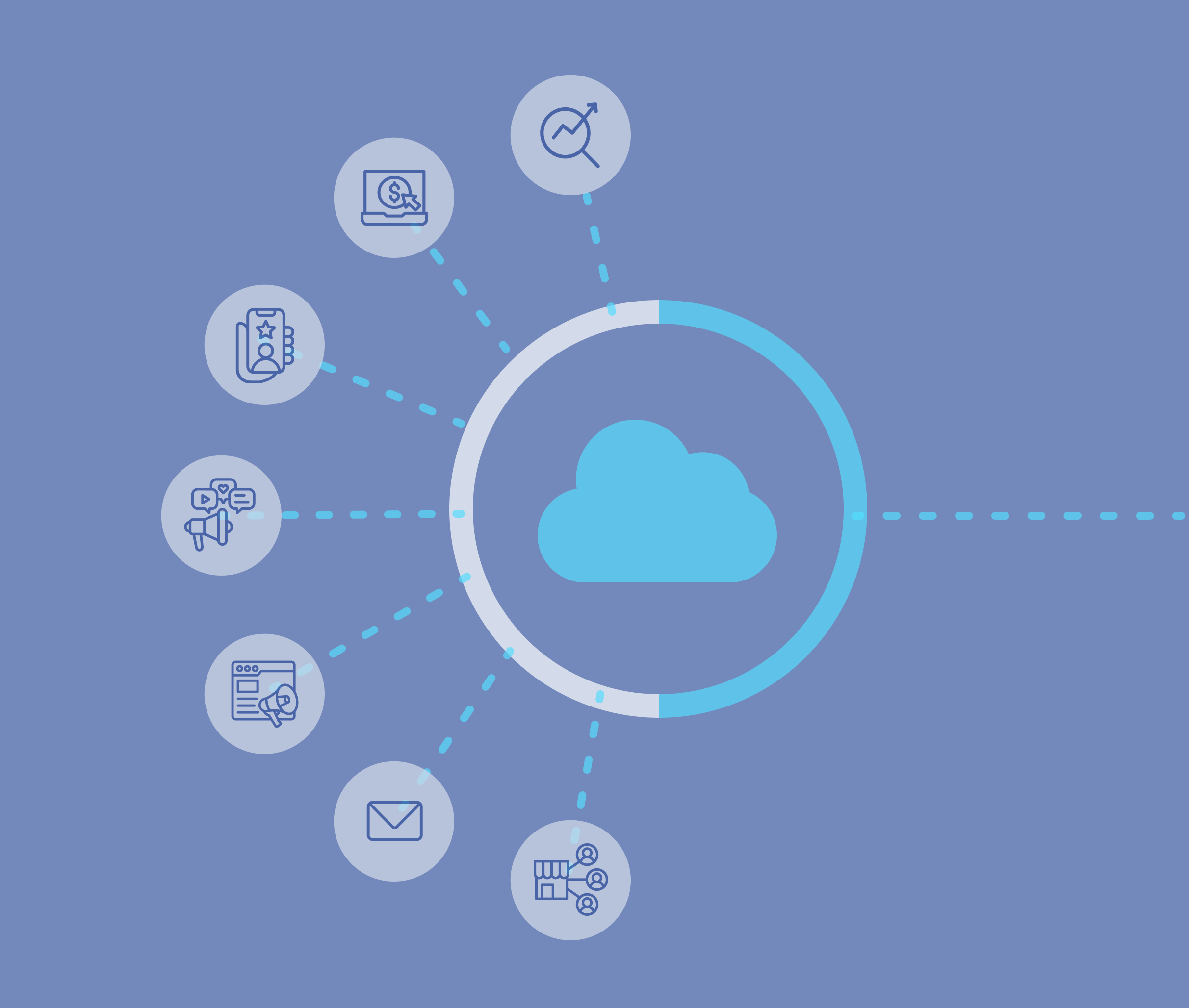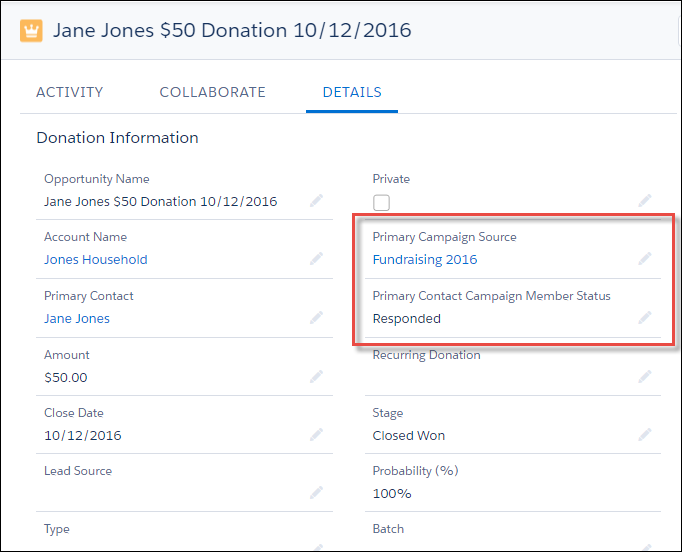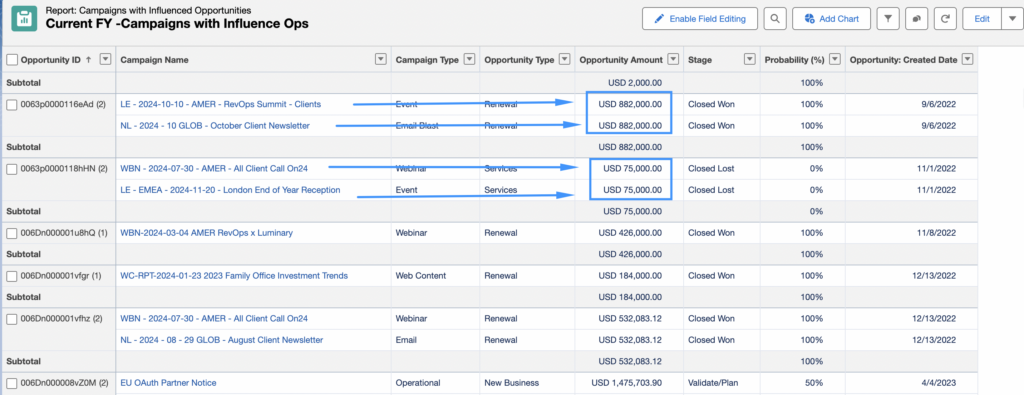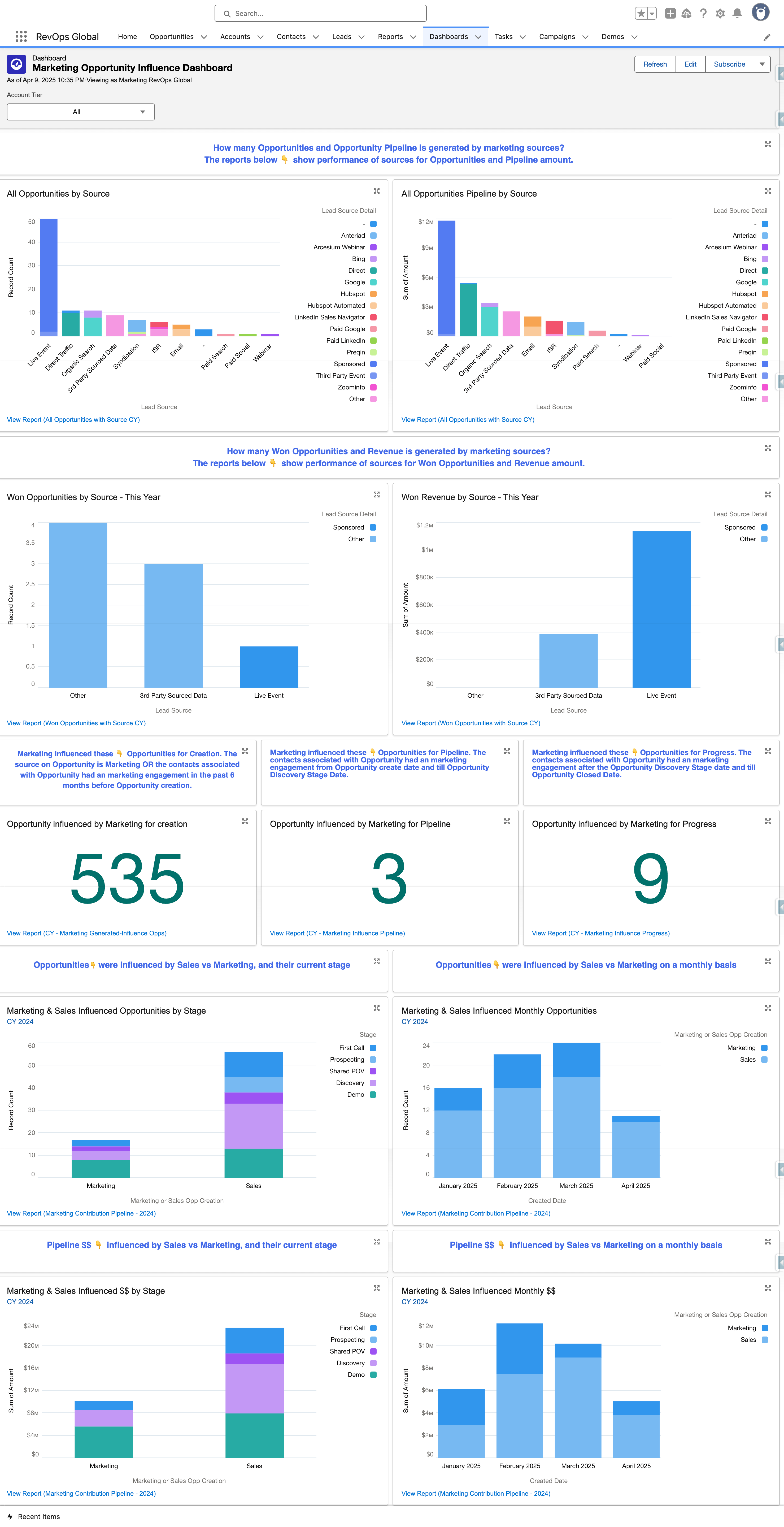
Why Salesforce’s out of the box Marketing Influence Model fails you!
Salesforce provides two out-of-the-box models to measure marketing influence: primary campaign source and campaign influence with opportunities. Most teams using these models assume they have influence reporting in place.
Salesforce Campaigns play a key role in marketing attribution—they help track engagement and connect marketing efforts to pipeline. However, attribution models built on top of them often fall short. These default Salesforce models struggle to reflect the complexity of real buyer journeys. They miss key marketing engagements, ignore all the sales outbound outreaches or automated sequences, over-attribute pipeline amount to last-touch campaigns, and offer limited flexibility for drill-down analysis.
This creates a disconnect: marketing teams can’t confidently show where they’re driving impact, and analytics teams are left piecing together incomplete data to inform budget and resource decisions.
In this article, we’ll walk through how Salesforce’s attribution models work, where they fall short, and how to approach influence measurement in a way that’s accurate, scalable, and actually helps you make better decisions.
How Marketing Attribution works in Salesforce
Salesforce offers two standard methods for reporting campaign influence:
1. Primary Campaign Source:
This model links each Opportunity to a single Campaign: the one most recently responded to by the primary contact before the Opportunity was created. That campaign is credited with 100% of the Opportunity amount.

Primary Campaign Source is easy to use, commonly used, and requires no setup. However, it’s inherently a single last-touch model. It ignores the entire multi-touch journey that typically precedes a deal.
For example, if a prospect attends a webinar, downloads a whitepaper, and fills out a “Contact Us” form (triggering opportunity creation), then only the “Contact Us” campaign gets the credit. Every prior engagement is dropped from the story.The person who originally implemented GDPR has left or moved to another role, leaving no one responsible for maintaining compliance.
- What does that mean?
- The last touchpoint gets 100% of the credit.
- Pre-Opportunity marketing engagements—like the first campaign that brought them in, events, ebooks, and webinars—are entirely ignored.
- There’s no consideration for when or how each touchpoint contributed for every lifecycle stage.
- Why is this a problem?
Modern B2B buying journeys are anything but linear. You can’t ignore the middle or the top of the funnel.
2. Campaign Influence with Opportunities:
This model expands attribution by allowing multiple Campaigns to be associated with an Opportunity. It recognizes that several touchpoints may have contributed. So, if multiple campaigns are involved, each one drives the full deal value.


- What does that mean?
For example, if a $50,000 deal is associated with five campaigns. In this model, by default:- Every campaign linked to the Opportunity gets full credit for the entire deal amount. So, if the contact is engaged with 5 different campaigns, each one gets credit of generating $50,000, totaling to $250,000 of revenue from a $50,000 opportunity.
- There’s no weighting or proportional distribution of influence.
- Multiple contacts engaging with the same campaign can further inflate the numbers.
- Why is this a problem?
- This leads to inflated influenced amount metrics. You now report $250,000 of campaign-attributed revenue from a $50,000 opportunity. When the same revenue is counted multiple times across different campaigns, it becomes difficult to understand which ones truly drove impact.
- All campaigns are treated equally. A high-intent field event and a low-engagement newsletter click to receive the same level of credit. The lack of ability to give weightage to different campaigns can misguide both marketing performance reporting and future investment decisions.
The Solution: Adopting a True Marketing Influence Model
If you want to move beyond inflated metrics and single-touch attribution, your influence model needs to reflect how modern buying really happens: multi-touch, multi-contact, and often, across a long timeline. RevOps Global’s Marketing Influence Model captures pre- and post-opportunity engagement, distributes credit fairly, and helps teams make informed data-driven decisions.
- Identify How Campaigns Should Be Considered for “Marketing Influence”:
Not every campaign holds the same weight or intent. The first step is to define what qualifies a campaign as influential.
This step gives you a foundational layer of influence intent before engagement even happens.:- Each campaign owner assigns a revenue influence level: High, Medium, or Low.
- Marketing Operations records this in Salesforce on the campaign object itself.
- Marketing automation platforms (e.g., HubSpot or Marketo) sync with Salesforce and add records into corresponding campaigns when engagement occurs.
Pro Tip: Start with manual categorization, but leverage AI later to help identify patterns and auto-classify campaign impact based on real engagement and pipeline outcomes.
- Track Details for Every Campaign Engagement in Salesforce:
Leveraging the Campaign Member object in Salesforce for advanced tracking, can you help identify which sources/channels influenced that engagement, at which lifecycle stage the engagement happened, or whether the engagement converted the record into an MQL or generated a meeting for the sales team?
Similarly, you could leverage Salesforce Campaigns for automated outbound activities by the Sales team by connecting sequences from platforms like Outreach, SalesLoft, Groove, or HubSpot into Campaigns and measure their true impact on the pipeline. - Determine the Type of Influence Based on Campaign Timing: To ensure clarity around which campaign engagement made an impact at which stage of the Opportunity, establish these three processes:
- Tracking Marketing Influence to Create: To track the campaign engagements that occurred within the last 6 months before Opportunity creation. This would include all campaign engagements that influenced the creation of the Opportunity.
- Tracking Marketing Influence to Pipeline: To track the campaign engagements when the Opportunity has been created and is in the initial stages of qualification. This could include your marketing assets like case studies, research papers, ROI calculators, etc.
- Tracking Marketing Influence to Progress: To track engagements after the Opportunity has been qualified and its progression to closed stages.
- Build Dashboards That Show Stage-Wise Marketing Influence: Your reporting should go beyond top-of-funnel metrics and reflect where marketing is contributing across the funnel. Build dashboards that show:
- Opportunities influenced by marketing at different stages: creation, pipeline, and progress.
- A breakdown of marketing vs. sales influence by stage and month.
- Source-level insights into where the pipeline is being generated.

Upgrading your Marketing Attribution Reporting
Most attribution models fail because they try to simplify what’s inherently complex. Buying journeys don’t follow a straight path, and influence isn’t confined to a single campaign or moment in time.
Building an influence model that reflects the full journey not only improves attribution accuracy but also helps teams make smarter decisions about where to invest, what to optimize, and how to truly align sales and marketing around growth.
Attribution shouldn’t be about credit. It should be about clarity. Want to get deeper insights? Explore our services and let’s talk about smarter attribution.


